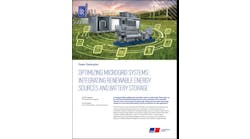New research shows the green building sector has created millions of jobs and contributed hundreds of billions to the U.S. economy, with LEED-certified building construction accounting for about 40 percent of green construction’s overall 2015 GDP contribution. Aggressive growth is expected over the next four years.
The 2015 Green Building Economic Impact Study, released by USGBC, finds green building outpacing conventional construction in terms of growth. It is slated to contribute 2.3 million jobs in 2015, growing to 3.3 million by 2018: more than one-third of the entire U.S. construction sector. It will generate $190.3 billion in labor earnings, and the industry’s direct contribution to U.S. GDP is expected to reach $303.5 billion from 2015-2018.
Total state earnings related to LEED building construction projects are estimated to total $8.4 billion by 2018. More LEED buildings will also mean savings on energy, trash, water and maintenance costs.
“Green building is playing a massive role in the U.S. construction sector, the clean and efficient energy sector and the U.S. economy as a whole,” said Rick Fedrizzi, CEO and founding chair, USGBC. “More than 2.3 million U.S. workers are taking home $134 billion annually in large part because of green building programs like LEED. Demand for green building will only continue to grow as individuals, businesses and institutions continue to prioritize sustainable approaches to the design, construction and operations of our built environment.”
***
The University of California Irvine, the University of Wisconsin at Oshkosh and the University of Maryland top the list of the 25 most energy efficient colleges. These colleges from across the U.S. implemented energy efficiency features such as LEED certified buildings, smart labs with 24-hour efficient power, hybrid geothermal heating and cooling systems, energy efficient windows, green roof additions, heat recovery systems and underground geothermal walls, and PV- and thermal-solar panels to conserve energy and lessen environmental impact. Even Boston University, which grew in size by 14 percent since 2006, reduced its energy consumption by four percent.
The U.S. D.O.E. recognized UC Irvine, which — in 2011 — accepted a challenge to improve energy efficiency by 20 percent by the year 2020. The school met its goal seven years early, reducing energy consumption 23 percent by 2013.
***
Global revenue for smart parking systems is expected to total $1.5 billion from 2015 to 2024, according to a report from Navigant Research. The market forecast includes smart parking systems hardware, software, and services through 2024.
Smart parking systems, enabled by sensor networks that detect vehicle occupancy, give drivers real-time availability information that makes it easier to find a spot. They seek to reduce urban traffic congestion, which costs the U.S. an estimated $100 billion each year in wasted time and fuel. Mark parking system technologies enable cities to reduce levels of traffic congestion, conserve fuel, and lessen greenhouse gas emissions.
The report also examines significant smart parking projects and case studies of major deployments from around the world.
“The market for smart parking is still in its early stages, but large-scale adoptions have already taken place in many cities across North America and Europe,” says Ryan Citron, research analyst with Navigant Research. “Overly congested cities in the rest of the world— particularly in Latin America— are also showing increasing interest in the technology.”
Read more energy efficiency news by subscribing to the free Energy Efficiency Markets newsletter.





